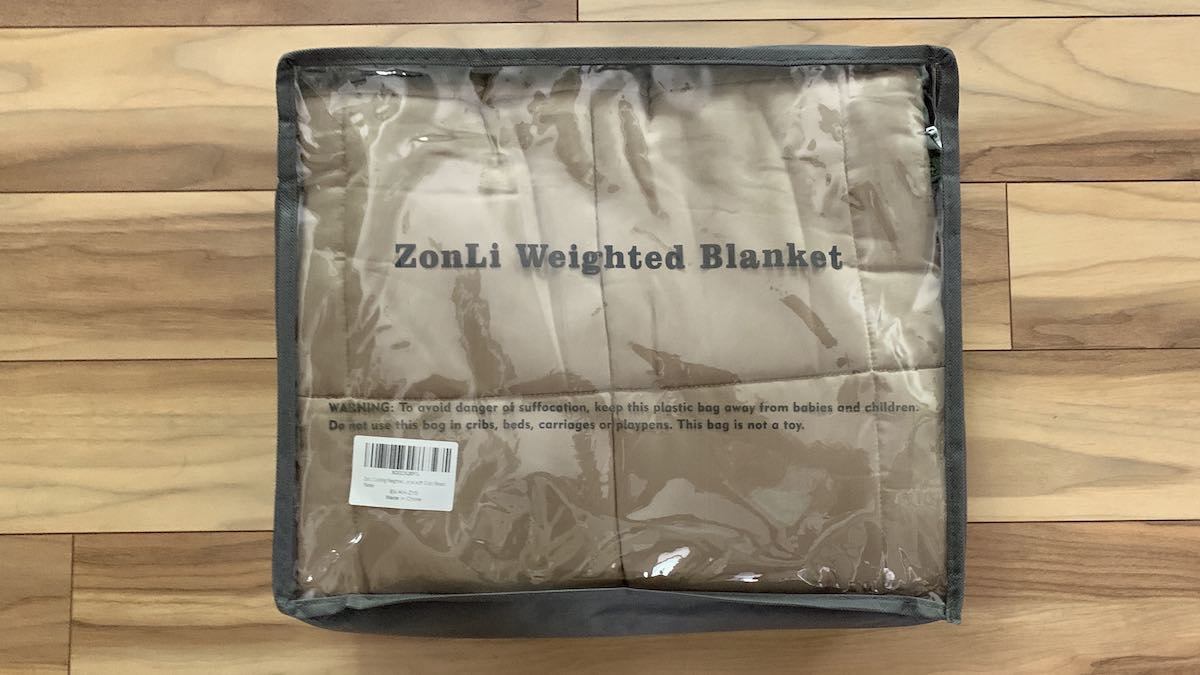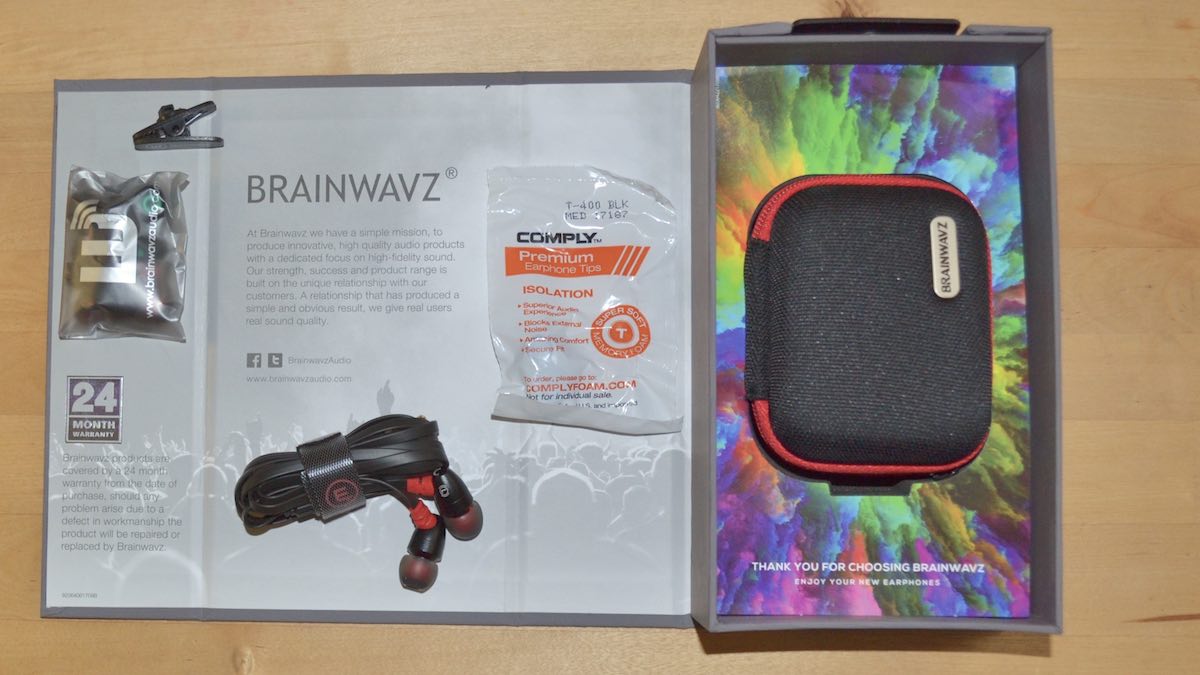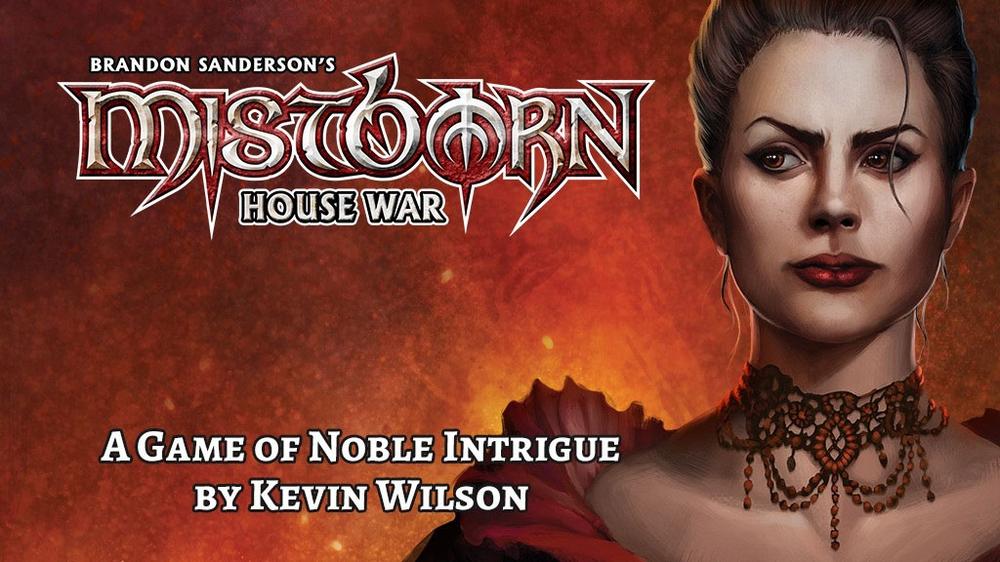Match the spots on your dice to the spots on your dogs to score—but bury too many in your yard, and you bust!
What Is Spots?
Spots is a dice-rolling game for 1 to 4 players, ages 10 and up, and takes about 30 minutes to play. It will be released next week (November 15), with a retail price of $24.99, and will be available on Amazon and directly from CMYK Games. (It will hit retail stores next year.) The game is pretty easy to learn, and even though it says 10 and up, my 9-year-old has been winning a lot; I think you could play with even younger kids. There is some reading involved, so perhaps 7 or 8 and up would be my recommendation.
Spots was designed by Jon Perry with Alex Hague and Justin Vickers and published by CMYK Games, with illustrations by John Bond.

Spots Components
Here’s what comes in the box:
- 4 Yard tiles
- 32 Dog cards
- 20 Treats
- 40 dice
- 22 Trick tiles

The yards are large cardboard tiles that have a dog with a doghouse aboveground, and then an underground area representing the things the dog has buried there, from dinosaur bones to a postal carrier’s hat and bag, and even a copy of the Spots game itself! The illustrations for these and the dog cards are by John Bond and they’re a lot of fun, particularly if you’re somebody who loves dogs.

I’ll confess: I’m actually not a dog person myself, but I still enjoy the illustrations and the fun names. I’ve played the game with many people who are very much dog people, and I can attest to the joyous exclamations over each new dog card that gets revealed. There’s also Doog (pictured at the bottom right), who is very much a dog and not at all a cow pretending to be a dog. Each card has one to three spaces for placing dice (except for Doog, who is large). Some of the cards also have paw print icons on them.
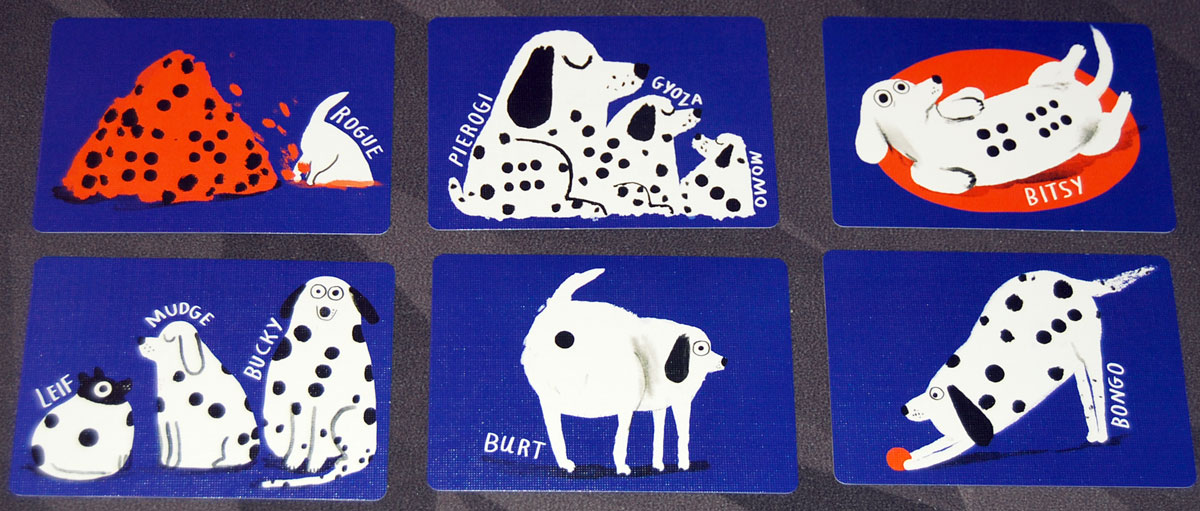
The backs of the cards show the same dogs, but with a blue background and occasionally some red accent colors, but without the dice outlines. There are also no paw print icons on the backs.
The trick tiles are large tiles that show a colored ribbon in the corner, and then have instructions printed on the rectangle portion. The two red-ribbon tricks (Howl and Roll Over) are used in every game, but for the other four colors, you use one of each, so there are lots of possible combinations. Each ribbon color has a unique shape as well, making it more accessible for color blind players.

The treats are small wooden bones. The dice are six-sided dice, about standard size, but the rounded corners and slightly uneven pips are made to look like the illustrated spots on the dog cards. It gives the dice a charming, lopsided look that goes really well with the rest of the game’s aesthetic.
The whole thing fits in a fairly compact box, about the size of a mass market paperback but a bit thicker.
How to Play Spots
You can download a copy of the rulebook here.
The Goal
The goal of the game is be the first to score 6 dogs.
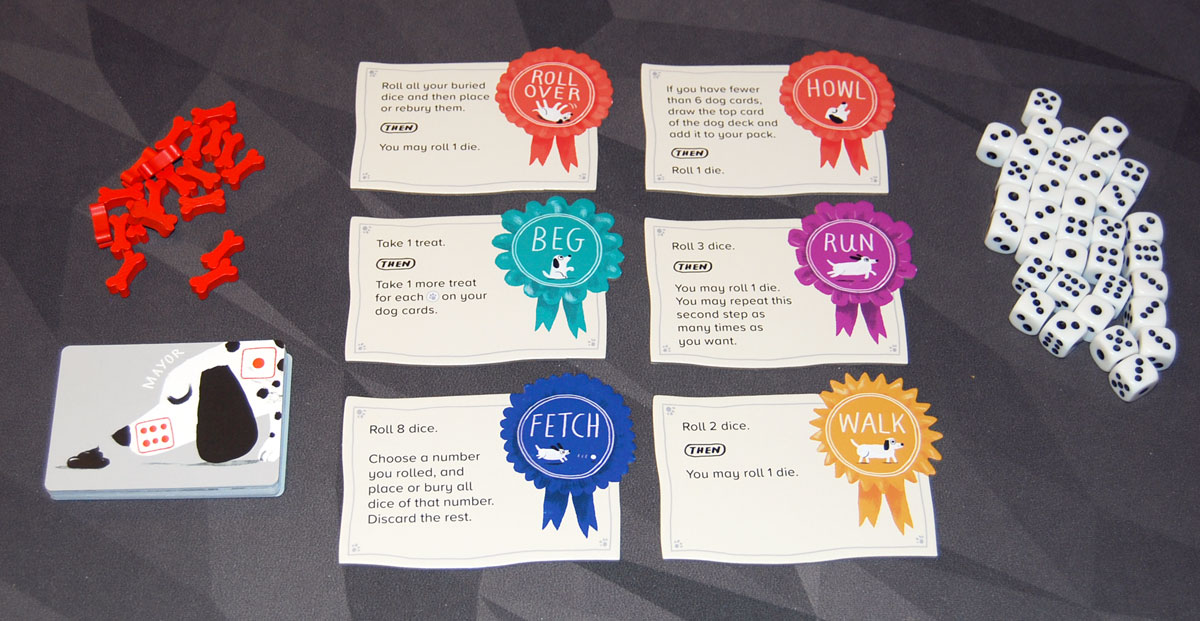
Setup
Shuffle the dog cards and make a supply of treats and dice. Set out the Howl and Roll Over tiles, and then place one of each of the other color tricks. For your first game, the set pictured above is recommended: Walk, Run, Beg, and Fetch.
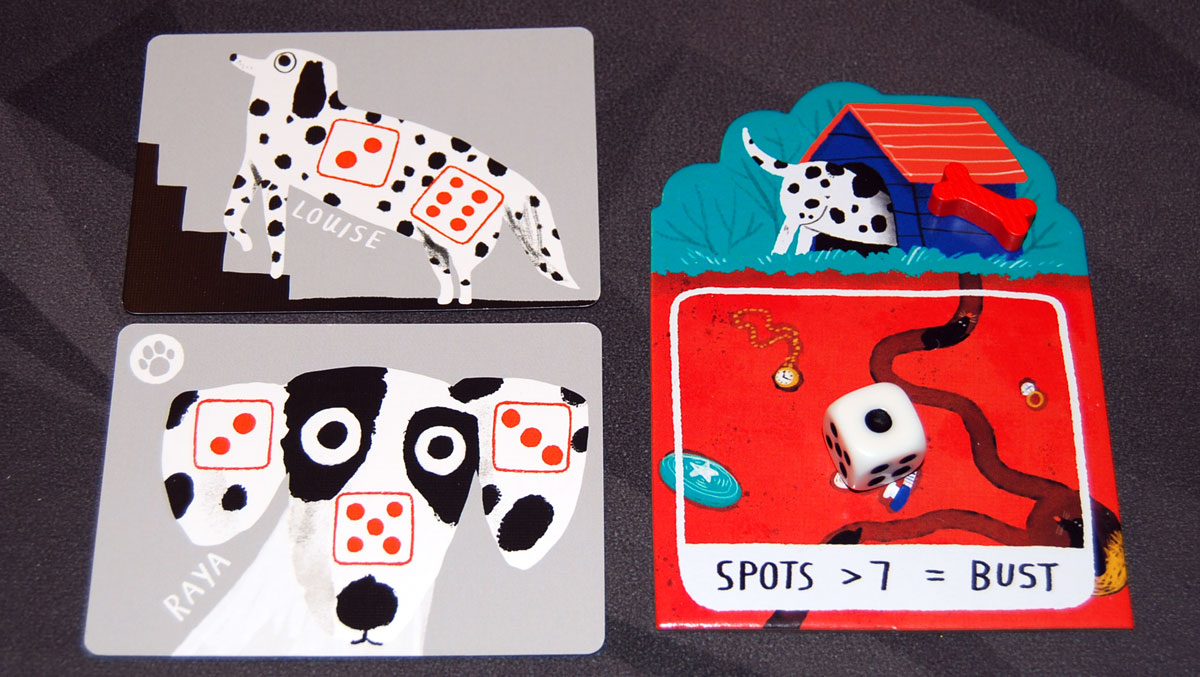
Each player takes a yard, two dogs (grey-side up), and one die. Roll the die and place it in your yard. The player with the highest number goes first—if there’s a tie, roll again until the tie is broken.
Gameplay
On your turn, you will either do a trick or score your dogs.
To do a trick, you choose an available tile, follow the instructions, and then flip the tile over so it’s no longer available. If you start your turn and there is only one available tile, put a treat on it, and flip all the tiles face-up. If you do a trick that has a treat on it, you get the treat.

Most of the tiles are pretty self-explanatory. If an instruction says “may,” then it is optional, but otherwise everything is mandatory.
Most of the time, this involves rolling some number of dice, and then placing them. If a die matches an open space on a dog, then you can place it there. If not, then it gets buried in your yard. If the total number of spots in your yard is more than 7, you bust, and all of your dice (in your yard and on all of your dog cards) get returned to the supply, and your turn ends immediately.
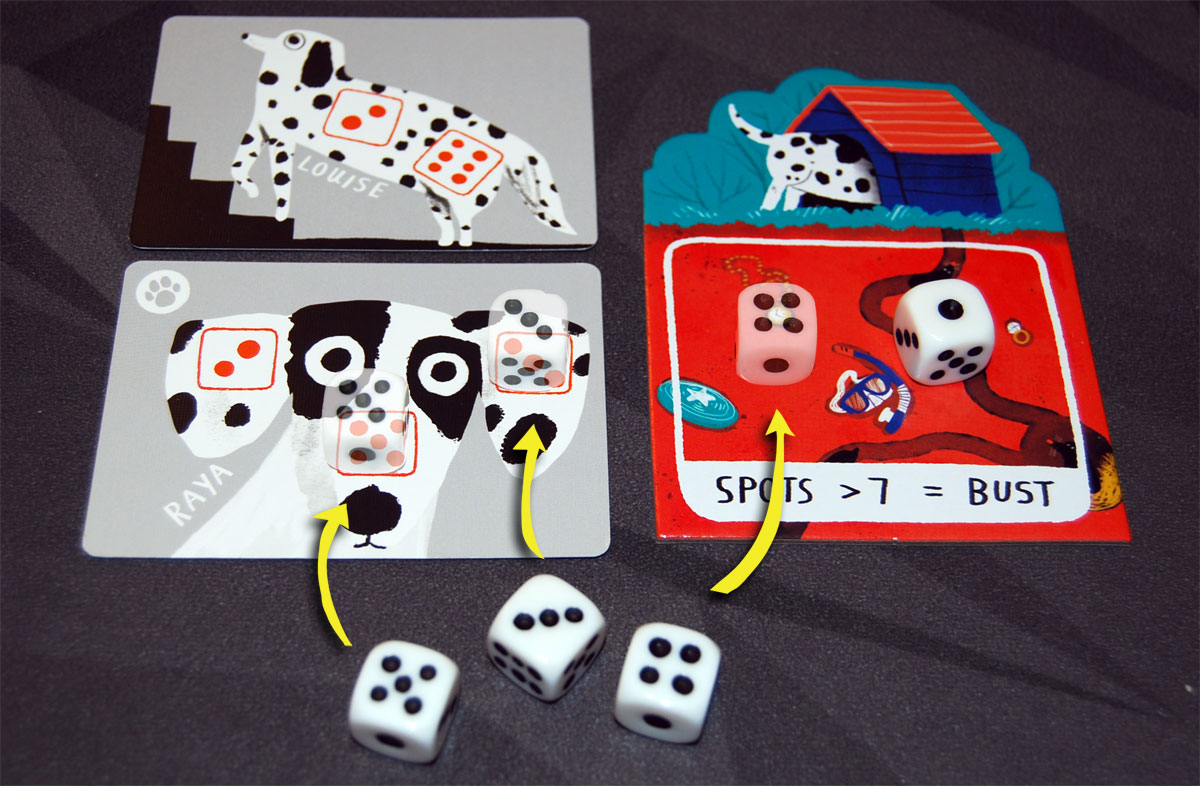
You can spend treats to re-roll, but you have to re-roll the whole batch of dice you just rolled, not just the ones that you don’t like. You may spend any number of treats to keep re-rolling the same group of dice.
Some tricks have steps that you can repeat any number of times, pressing your luck until you decide to stop or you bust. Other tricks will get stronger depending on the number of paw prints on your dog cards.
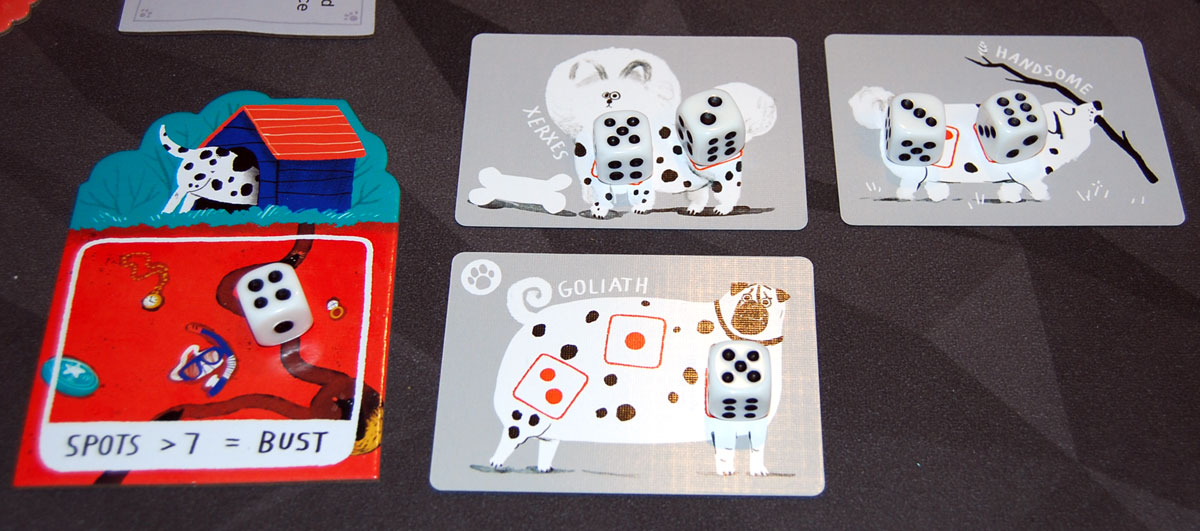
There are two ways to score your dogs. On your turn, instead of doing a trick, you can score all of your completed dogs: remove the dice and flip those cards over to the blue side, and then draw as many dog cards as you scored (to a maximum of six total dog cards). That ends your turn.
Or, you can take the “fast and risky” approach. If you do a trick and all of your dog cards are filled (and you don’t bust), you get to score them immediately and draw new dog cards. If there were additional steps to take on the trick, you may continue doing those after you draw cards.

Game End
The game ends immediately when a player scores 6 dog cards and wins!
Variant Rules
There’s an “Off Leash Hours” variant if you want a bit more chaos. Instead of choosing one of each color trick, you use the whole stack! When you use a trick in one of the stacks, it flips face-down as usual and stays on top of the stack. When it’s time to reset the tricks, the used tricks are moved to the bottom of the stack, revealing new tricks.
The rulebook also has recommended sets of tricks, in case you don’t want to randomize them.
Spots is GeekDad Approved!
Why You Should Play Spots
Spots is an adorable dice game with a touch of press-your-luck and some fun tricks up its sleeves. (Do dogs have sleeves?) I was sent an advance copy and have really been enjoying it, despite my daughter’s uncanny ability to roll exactly what she needs. She’s a dice whisperer, literally: she carefully selects dice from the pool, chants the numbers she wants, and then rolls. Say what you will, but she’s won each time she’s played with me.
Lucky dice rituals aside, what I like about Spots is the way that the overall rules are simple to learn, and each individual trick is also pretty easy to understand, so you can break this out and just have a good time rolling piles of dice and admiring the good doggos. But there’s also some strategy involved in which trick to perform on your turn, or when to take the safe route to score your dogs and when to take a risk, or when to spend your treats for a re-roll.
The always-available tricks are Howl and Roll Over. Howl lets you add another dog to your pack (if you aren’t at 6 already) and then roll a die. Having more dogs means it’s harder to take the fast-and-risky scoring option, because you have more spaces to fill before that kicks in. On the other hand, it could give you some buffer for busting—if the spaces you have left on your dogs are all the same number, then chances are high that you’ll have to bury dice. More spaces means fewer dice go into your yard. Plus, it’s an amazing feeling if you can get several dogs scored all at once. (Ask my kid.)
Roll Over lets you pick up all the dice in your yard and roll them. It’s like a second chance. If you have lots of dice that have been piling up, it could clear out your yard for a reset if you manage to get them all placed. On the other hand, it’s possible to bust with just 2 dice in your yard, so if you have a big pile of low numbers in your yard, it might not be a great idea to Roll Over just yet.

The rest of the tricks are grouped by color, and each has a “flavor” with different varieties. Blue tricks allow you to discard a certain number of dice that you rolled, helping you avoid burying too many. The purple trick is generally the push-your-luck trick that lets you repeat an action as many times as you want. It’s the “go big or go home” option, particularly if you’ve used Howl a lot and you really need to catch up. The teal tricks are about getting treats. The yellow tricks have varying abilities—usually not rolling as many dice, but with some other special effects. (One, called Dig, can be particularly nasty: you get to raise or lower the pips on anyone’s buried dice, which means you could even cause somebody else to bust!)
Since the tricks slowly get depleted as they’re used, and then reset when it gets down to one, you may not always have access to all of the tricks on your turn. Although most of the tricks don’t affect other players directly, you can take tricks that could make it less convenient for the players who follow you. For instance, if somebody is already pushing 7 spots buried in their yard, chances are they’ll want to Roll Over—but you could take the action before they do. Even the timing of when you score your dogs could affect somebody’s choice of actions, because you won’t flip a tile that turn, which throws off the cycle of when things reset.
Do you need to know all this about the game to enjoy it? No, certainly not, and that’s one of the things that makes it fun. It is, at its core, a light-hearted dice game with a lot of chance, and your best intentions to minimize risk or maximize the odds could get completely ignored by Lady Luck, as you watch your kid get exactly the numbers she needs on roll after roll. Um, for instance. It’s a game that can be enjoyed without thinking too much about your turns while having a conversation, or you can dig in deep, paying attention to what the other players are doing and try to outpace them.
For more information or to pre-order a copy, visit the CMYK Games website!
Click here to see all our tabletop game reviews.
![]() To subscribe to GeekDad’s tabletop gaming coverage, please copy this link and add it to your RSS reader.
To subscribe to GeekDad’s tabletop gaming coverage, please copy this link and add it to your RSS reader.
Disclosure: GeekDad received a copy of this game for review purposes.




